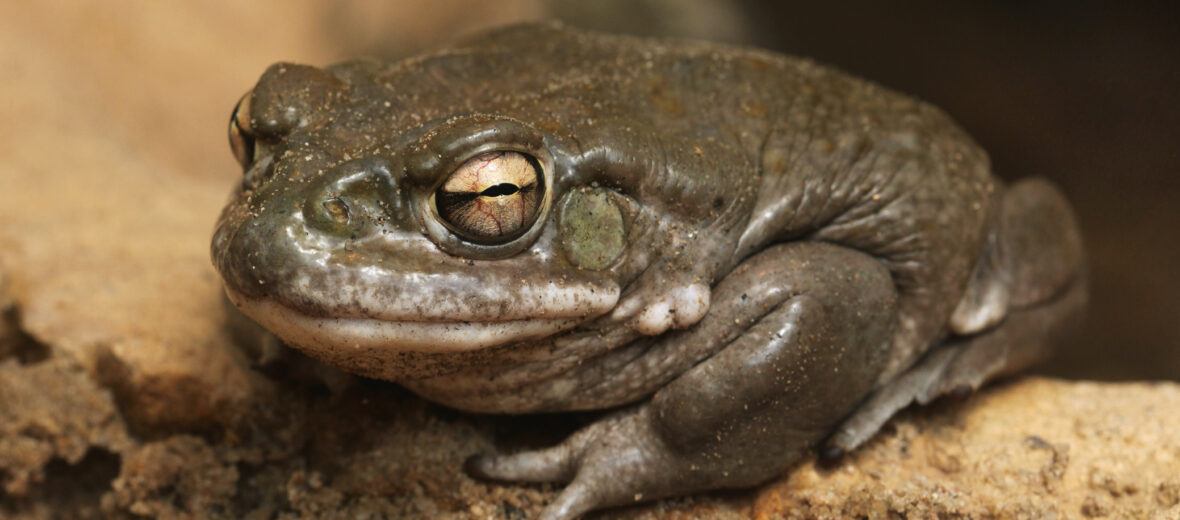
The Sonoran desert toad is Arizona’s largest toad and one of the largest toads in North America. These toads are notorious for their poisonous paratoid glands behind their eyes, on either side of their head. These toads are found in central Arizona to southwestern New Mexico and Sinaloa, Mexico around oak, desert scrub, semi-desert grasslands, and sometimes pine-oak woodlands up to elevations of around 5,800 feet. They usually reside near permanent water sources. These toads come out in large numbers during the monsoon season and sometimes a couple months before, in areas with a permanent water source.
First the Stats…
Scientific name: Incilius alvarius
Weight: Up to 2 lbs.
Length: Up to 8 inches
Lifespan: Up to 20 years
Now on to the Facts!
1.) Desert toads, like most toads, are nocturnal (active at night).
2.) They eat centipedes, insects, spiders, lizards, mice, and other amphibians. But they will eat just about anything they can get into their mouths, to be honest.
3.) Another name for these toxic toads is the Colorado River toad or sapo grande, which translates to “big frog”.
4.) Throughout the dry season, the Sonoran desert toad will hide and brumate in rodent burrows or other underground retreats.
5.) Their toxins have hallucinogenic qualities in humans and can cause nausea and extreme vomiting. If enough of the toxin is ingested it can cause death, even in humans.
But wait, there’s more on the Sonoran desert toad!
6.) Symptoms of poisoning in pets include: pawing at the mouth and/or eyes, crying or other vocalizations, excessive drooling, inflamed or pale membranes in the mouth, difficulty breathing, unstable movements, seizures, high temperature, and eventual collapse & death (if not treated immediately).
7.) During mating season, males will develop nuptial pads on the thumbs of their forelimbs, to help hang on during amplexus (when the male grasps the female in a kind of coitus position).
Did you know…?
Their gland secretions are highly toxic to dogs, cats, and other small to medium size pets! Neurotoxins containing 5-MeO-DMT and bufotenin cause a host of issues and can even lead to death!
8.) Males either call for females from shallow pools of water of their breeding pond or physically search for females.
9.) Females lay up to 8,000 eggs in a long gelatinous “stringer”.
10.) Tadpoles emerge in about a month or less and begin their metamorphosis into adult toads.
Now a Short Sonoran Desert Toad Video!
Also, check out the Critter Science YouTube channel. Videos added frequently!
Want to suggest a critter for me to write about? Let me know here.



